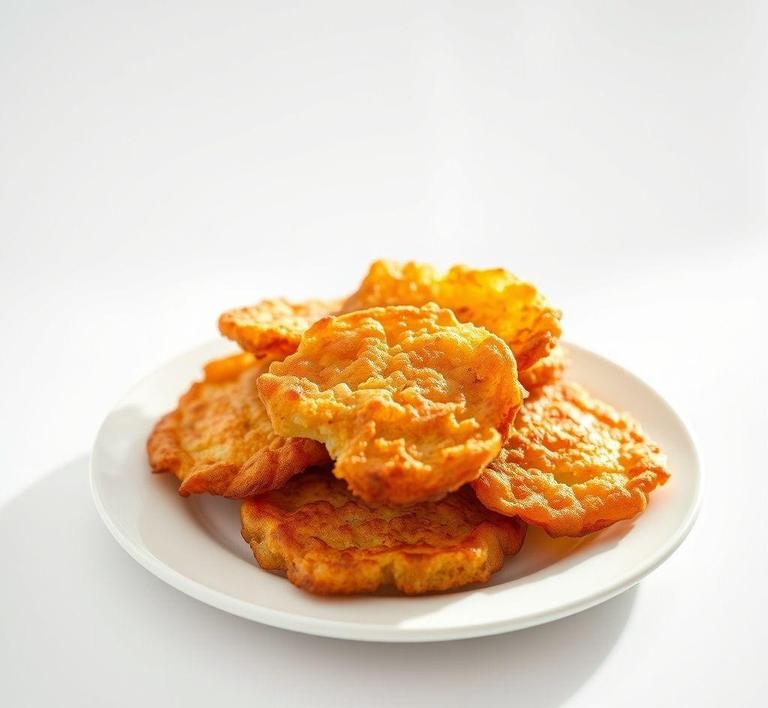If you’ve ever found yourself with a bag of leftover hash browns, you might be wondering if it’s safe-or even possible-to refreeze them. The good news is, yes, you can refreeze hash browns, but there are a few things to keep in mind to make sure they maintain their crispy texture and flavor. In this guide, we’ll walk you through the steps to properly store and refreeze your hash browns so they stay as delicious as the day you first cooked them. So, if you’ve ever asked yourself, “Can I refreeze these”?, we’ve got you covered!
Can You Refreeze Hash Browns?

Hash browns are a beloved breakfast staple, found in restaurants, fast food joints, and home kitchens across the world. Whether they’re crispy, golden patties or shredded, savory piles of potato goodness, they’re a quick and satisfying meal option. But what happens when you find yourself with leftover hash browns, or you’ve bought a big bag and don’t want them to go to waste? You might wonder, “Can you refreeze hash browns”?
In short, yes, you can refreeze hash browns. However, the answer isn’t as simple as just tossing them back into the freezer. The refreezing process can affect the texture and taste of hash browns, so it’s important to understand how freezing and thawing impacts them. Typically, foods that have been frozen once and then thawed can suffer in terms of both quality and safety, but with proper handling, hash browns can generally maintain their appeal after being frozen, thawed, and refrozen.
Let’s break down the process and what you need to consider before popping those hash browns back into the freezer.
How To Refreeze Hash Browns?
Refreezing hash browns is not as straightforward as slapping them back in the freezer once they’ve been thawed. If you’re looking to retain their taste and texture, there are some steps you should take. Here’s how to do it properly:
-
Thaw Them Correctly
If your hash browns were initially frozen raw (uncooked), it’s important to thaw them safely. For best results, you should thaw them in the fridge rather than at room temperature. Thawing at room temperature can allow bacteria to grow, which may lead to foodborne illness. When thawing in the fridge, aim for a time frame of 6-8 hours, or overnight.
If the hash browns are cooked, you can either thaw them in the fridge or use the microwave to quickly reheat them. The microwave is a faster option, but it can affect the texture more than refrigerator thawing.
-
Dry Off Excess Moisture
After thawing, hash browns often release moisture, especially if they were initially cooked. This moisture can affect the quality of the refrozen hash browns by making them soggy when cooked later. To avoid this, spread the thawed hash browns on a paper towel or clean kitchen towel to absorb excess water. The drier they are, the better the final result will be when reheating.
-
Flash Freeze for Best Results
If you want to maintain their texture and prevent them from clumping together when you refreeze them, you can opt for “flash freezing”. To do this, lay the thawed hash browns on a baking sheet in a single layer and place them in the freezer for 1-2 hours. Once they’re frozen solid, you can transfer them into an airtight container or a freezer-safe plastic bag. This step helps to preserve the individual pieces, making it easier to remove just the amount you need without having to thaw the entire batch.
-
Proper Packaging
When storing the hash browns for refreezing, it’s essential to use airtight packaging. The best option is to place them in a high-quality, freezer-safe plastic bag, squeezing out as much air as possible. Alternatively, you can use vacuum-sealed bags to extend freshness. A tightly sealed package will help protect the hash browns from freezer burn, which can degrade their quality.
-
Label and Date
As with any frozen food, it’s helpful to label the packaging with the date you’re refreezing the hash browns. This will help you track how long they’ve been stored, ensuring you don’t keep them in the freezer too long. Ideally, refrozen hash browns should be consumed within 1-2 months for the best quality.
Quality Impact
Refreezing hash browns can significantly impact their quality. Understanding these effects will help you manage expectations and possibly adjust your methods to preserve their texture and flavor. Here are the primary quality factors that can be affected by refreezing hash browns:
-
Texture Degradation
One of the biggest concerns when refreezing hash browns is the potential loss of texture. Potatoes have a high water content, and when they freeze and thaw, the water inside the potato cells forms ice crystals. These ice crystals can rupture the cell walls, causing the hash browns to become soggy or mushy when they’re cooked again. The more times hash browns are frozen and thawed, the greater the risk of this texture degradation. Flash freezing can help mitigate some of this by preventing the pieces from sticking together and maintaining their structure.
-
Loss of Crispness
Hash browns, especially the fried variety, are best known for their crisp exterior and soft interior. When hash browns are frozen, the crispiness is often the first characteristic to be affected. Upon refreezing, even with careful packaging and flash freezing, the hash browns will likely lose some of their crisp texture. When reheating, you may notice a softer, less crispy surface. If you’re hoping to restore some of that crunch, you can try reheating them in a hot oven or skillet to get them crispy again.
-
Flavor Changes
Freezing can also affect the flavor of hash browns. The freezing process can cause the potatoes to lose some of their natural sweetness, and they may take on a slightly bland taste. Additionally, the oils used to cook them can become rancid over time, especially if stored too long. To preserve flavor, it’s best to refreeze hash browns as quickly as possible after thawing, ideally within a few days, to prevent any off flavors from developing.
-
Potential for Freezer Burn
If hash browns aren’t stored in an airtight container, they’re at risk of freezer burn, which occurs when the surface of the food is exposed to air and moisture is drawn out. Freezer-burned hash browns will have dry, discolored patches and may taste off. To avoid freezer burn, ensure the packaging is as airtight as possible and that they are consumed within a reasonable timeframe.
While you can refreeze hash browns, it’s not without its challenges. Refreezing can alter the texture, flavor, and crispness of hash browns, potentially making them less appealing than when they were first frozen. However, if you follow the right steps-thawing them correctly, drying off excess moisture, flash freezing, and properly packaging them-you can mitigate some of the negative impacts.
If you’re planning to refreeze hash browns, keep in mind that they’re best enjoyed within 1-2 months of refreezing for optimal taste and texture. The more times you freeze and thaw, the greater the potential for quality loss, so it’s important to consider how many servings you want to store at once.
Is It Safe To Refreeze Hash Browns?
Refreezing hash browns can be a bit tricky, but it’s not entirely off-limits if done properly. Generally speaking, hash browns are safe to refreeze under the right conditions, though the quality might suffer with each freeze and thaw cycle. The key factor in deciding whether or not it’s safe to refreeze hash browns comes down to how they’ve been handled during the initial freeze-thaw process.
If hash browns have been thawed in the refrigerator (at a consistent, safe temperature) and not left out at room temperature for extended periods, refreezing them is usually fine. The safety of refreezing primarily depends on whether they’ve been exposed to bacteria while thawing. If they were left out for more than two hours, they could have entered the ‘danger zone’ of 40°F to 140°F (4°C to 60°C), where bacteria multiply rapidly. In that case, refreezing is not recommended due to the risk of foodborne illness.
Furthermore, quality will degrade slightly every time food is frozen and thawed. The texture and flavor of hash browns might not be as fresh or crisp after being refrozen, as freezing can break down the cell structure, making them soggy when cooked.
Signs That Hash Browns Should Not Be Refrozen
Knowing when hash browns should not be refrozen is important for both safety and taste. Here are the primary indicators:
- Extended Time at Room Temperature: If the hash browns were left at room temperature for more than two hours, they may have become a breeding ground for harmful bacteria. This is a clear sign that they should not be refrozen. If you’re unsure of the time they’ve been out, it’s better to err on the side of caution and discard them.
- Visible Signs of Freezer Burn: If your hash browns have been in the freezer for too long and have freezer burn (discolored, dry patches), refreezing them can cause further degradation in texture and taste. While freezer-burned food is still technically safe to eat, the quality will be compromised, and repeated freezing can make them even more unpleasant.
- A Strange or Off Odor: If hash browns develop an unpleasant smell after being thawed, it could be a sign that the food has spoiled. It’s a definite indication that the hash browns should not be refrozen. This off-putting odor is often a result of bacterial growth or oxidation, both of which are concerns for food safety.
- Mushy or Soggy Texture: Once hash browns thaw, they can become mushy or soggy, especially if they’ve been exposed to moisture. If they’re excessively wet, this is a sign that refreezing them could ruin their texture even more. Repeated freezing and thawing will further compromise the crispiness you may expect from well-prepared hash browns.
Common Refreezing Mistakes
Even though refreezing hash browns can be done safely, several common mistakes can lead to poor results. Here are some of the most frequent pitfalls:
- Refreezing Without Proper Cooling: If you plan on refreezing hash browns, it’s crucial to cool them quickly and thoroughly before putting them back in the freezer. Thawing hash browns in the refrigerator rather than at room temperature helps maintain food safety. However, if they’re not properly cooled and immediately refrozen, bacteria can grow and spoil the food.
- Inadequate Packaging: Improper packaging during the first freeze or the refreeze is a major mistake. Hash browns should be sealed in an airtight container or freezer-safe bag to prevent moisture from getting in. If the packaging isn’t sealed well, moisture loss and freezer burn can occur, making the hash browns unappetizing when reheated.
- Refreezing Pre-cooked Hash Browns Without Consideration: Many store-bought hash browns are pre-cooked or partially cooked. Refreezing these can often lead to a noticeable loss of texture and quality, as the moisture content has already been affected. While they might still be safe to eat, they’re unlikely to retain their crispness after the second freeze-thaw cycle.
- Thawing Hash Browns on the Counter: Thawing hash browns on the kitchen counter at room temperature is a recipe for disaster. The growth of harmful bacteria is accelerated when food is left in the ‘danger zone’ for extended periods. Always thaw in the fridge or use the microwave for faster thawing.
Tips And Tricks
To maintain the quality and safety of your hash browns when refreezing, follow these helpful tips and tricks:
- Flash Freeze for Better Texture: If you have homemade or freshly cooked hash browns, flash freezing them before placing them in storage bags can prevent them from sticking together in one big clump. Spread them out in a single layer on a baking sheet and freeze for 1-2 hours before transferring them into an airtight container or freezer-safe bag.
- Portion Control: When refreezing hash browns, consider portioning them into smaller amounts that you will use in one go. This way, you won’t have to thaw and refreeze the entire batch, which can affect the quality of the food.
- Use Freezer Bags: For best results, use freezer bags designed for long-term storage. These bags prevent air from entering, which reduces the chance of freezer burn. If you don’t have freezer bags, try wrapping the hash browns in plastic wrap first and then placing them in a resealable freezer bag for added protection.
- Thawing Tips: When it comes time to thaw your refrozen hash browns, do it in the refrigerator overnight to ensure they thaw safely. If you’re in a hurry, use the microwave to thaw them in short intervals to avoid overcooking them. A good rule of thumb is to cook them right after thawing-don’t let them sit out for too long.
- Cook Immediately After Thawing: After thawing hash browns, cooking them as soon as possible helps to lock in moisture and prevent further degradation of texture. Avoid letting thawed hash browns sit out too long, as they can begin to lose their firmness.
- Season After Thawing: If you’ve seasoned your hash browns before freezing, the flavors may become diluted once they’re thawed. Consider adding a bit of salt, pepper, or other spices after they’ve been thawed and reheated to restore some of their original flavor.
Conclusion
In conclusion, while it’s technically safe to refreeze hash browns, the process requires careful handling to ensure both safety and quality. Refreezing them after they’ve been properly thawed and stored at the right temperatures is fine, but avoid refreezing if they’ve been left out too long or have developed signs of spoilage.
As a rule of thumb, the fewer times you freeze and thaw your hash browns, the better the final result will be. Always prioritize proper packaging, safe thawing methods, and quick reheating to preserve their texture and flavor. With the right approach, you can enjoy your hash browns without worrying about food safety or compromised taste.


